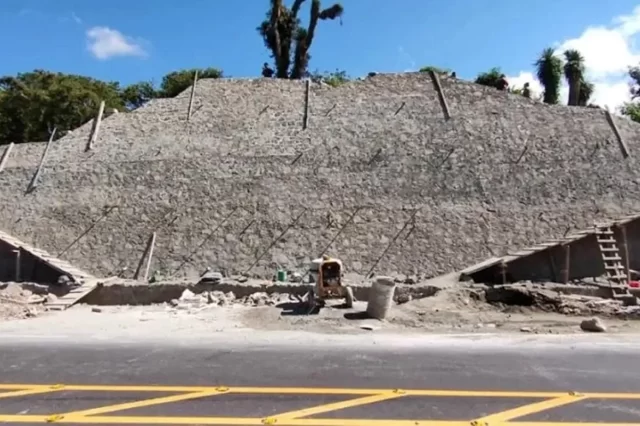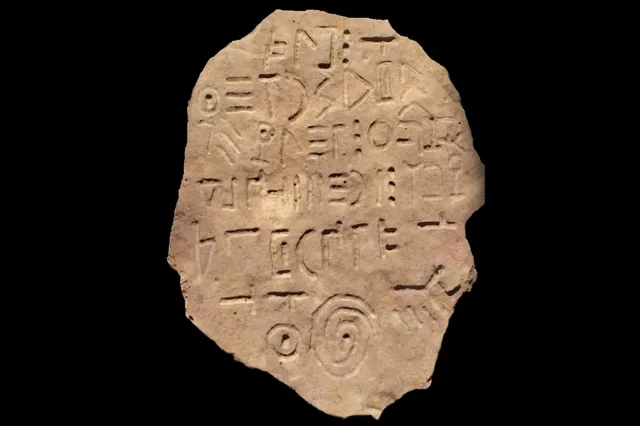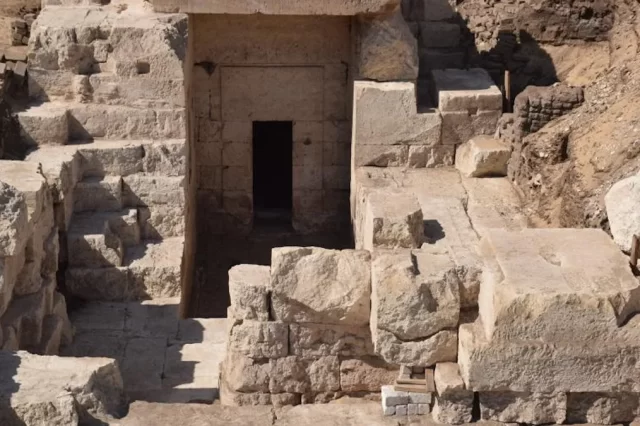Some of the oldest pyramids in ever built in ancient Egypt, even older than the Great Pyramid of Giza, are known to have never been tombs.
The ancient Egyptians are renowned for their impressive pyramids that still stand as some of the world’s most awe-inspiring structures. While the Great Pyramid of Giza is often the first to come to mind, the ancient Egyptians were building pyramids centuries before this iconic monument was erected. In fact, the ancient Egyptians stopped building intricate mastabas as burial chambers and opted for the construction of pyramids around 2,700 BC. This shift in building techniques is considered a revolutionary change in tomb building in ancient Egypt.
The Step Pyramid of Djoser is considered the finest example of the evolution of pyramid building in ancient Egypt. Pharaoh Djoser and his royal vizier and architect Imhotep are credited with revolutionizing ancient Egyptian architecture, laying the foundation for the pyramid-building frenzy that would follow. Although the ancient Egyptians were not the first civilization to build pyramids, their style evolved over time, culminating in the construction of the most impressive pyramid of all, the Great Pyramid of Giza.
Before the pyramids were built in Egypt, the birth of pyramid structures on Earth can be traced back to ancient Mesopotamia with the creation of Ziggurats. These structures were equally imposing as the pyramids, but they were made of sun-dried mud-brick, unlike the Egyptian monuments which were built of stone.
The Egyptian pyramids were meant to stand the test of time. They were imposing, stunning, and well-built, constructed as a worship to the sky and the sun. The pyramids reached for the sky and were believed to have been topped with a capstone made of either granite or basalt and plated with gold or silver, giving the monument an additional shine. Most of the Egyptian pyramids were believed to have been finished off with an outer casing composed of highly polished, reflective limestone. This addition to their outer structure made the pyramids reflect the rays of the sun, allowing them to shine almost like a mirror.
From 2700 BC, the ancient Egyptians developed pyramids and continued to build these massive structures until around 1700 BC. Back in the day, pyramids were of extreme importance to the ancient Egyptians. The Egyptian sun god Ra, acknowledged as the father of all pharaohs, was said to have created himself from a pyramid-shaped mound of earth before creating all other gods.
The idea of a pyramid is believed to have been drawn from several precedents, the most relevant of which was a mastaba at Saqqara labeled as 3038. This structure, built around 2,700 BC, is believed to almost have been a pyramid by accident. Scholars have revealed that the mastaba was constructed inside a deep pit with mudbricks covering walls up to six meters high. The mastaba had three sides which were extended and built with eight steps that were placed rising towards the sky at an angle of 49 degrees. Experts say that had the remaining side not been left uncovered, the structure would have become, unintentionally, the first elongated pyramid in Egypt.
Imhotep soon came up with the idea of stacking several mastabas on top of each other, resulting in the world-famous step pyramid. The Pyramid of Djoser was an impressive achievement that left an important mark in ancient Egyptian history. The pyramids that followed were equally impressive and evidence of a pyramid building transition in Egypt.
It is usually admitted that the second attempted pyramid in ancient Egypt was the structure at Meidum, commissioned by Pharaoh Huni, the last pharaoh of the Third Dynasty. Although some scholars argue that Sneferu was the one who built the pyramid at Meidum, it is acknowledged as the first attempt to build a straight-sided pyramid. The pyramid, which collapsed in ancient times, marked an important step in the evolution of pyramid building.
The transition from the third dynasty to the fourth dynasty marked a significant step in the evolution of pyramid building in ancient Egypt. During this period, the ancient Egyptians experimented with pyramids, resulting in the Bent Pyramid in Dashur, a structure commissioned by Pharaoh Sneferu. This pyramid is a unique example of the development of pyramid building in Egypt. Scholars indicate that the builders of the pyramid began building a monument with a 54-degree angle, but were forced to decrease the angle because the pyramid developed instability signs during construction. In order to avoid the pyramid from collapsing, the builders decided to continue building the pyramid with a much shallower angle. The pyramid was successful and provided much-needed construction details that would be used to build the next kind of pyramids.
However, during the transition from the third dynasty into the fourth dynasty, the ancient Egyptians built a series of mysterious pyramids in upper Egypt. Edfu is one such pyramid located nearly 800 kilometers south of the Pyramids at Giza that may hold many answers to our quest to understanding the purpose of the pyramids.
Located on the west bank of the Nile River are the remnants of an ancient settlement known as Wetjeset-hor, or as the ancient Greeks would later call it, Apollinopolis Magna. There, not far from the ancient settlement are the remnants of seven ancient step pyramids, believed to have been built by Pharaoh Huni. One of the pyramids believed to date back 4,600 years is the subject of archeological debate.
Although the pyramid’s existence was well-documented since 1894, we’ve not been able to figure out much about it. The pyramid, which is now in ruins, is believed to be one of several identical pyramids that were built in southern Egypt from Seila in the Fayum, Zawiet el-Meitin, Abydos, Naqada, Hierakonpolis, and Elephantine near the famous city of Aswan. Although it is assumed Huni was the one who commissioned the pyramid, experts aren’t sure. It was either Huni, the last ruler of the Third Dynasty of Ancient Egypt, or his son, Pharaoh Sneferu, the first king of the Fourth Dynasty of ancient Egypt.
The pyramid at Edfu, although much smaller in size, is believed to follow the shape of the first stone pyramid ancient Egypt gave birth to. While Djoser’s pyramid is usually considered the Pharaoh’s tomb, the monument at Edfu was never intended to serve the purpose of a tomb. Like the other six pyramids found in the province, the pyramid of Edfu did not contain any burial chambers. This is a significant detail that raises numerous questions about the entire meaning of pyramids.
Why would Huni or Sneferu follow Djoser’s footsteps in terms of pyramid style but decide not to include any burial chambers inside the pyramid? This is one of the greatest mysteries in ancient Egyptian pyramid building evolution. We’ve got absolutely no idea why the pyramid at Edfu was built, nor do we know anything about its purpose. There are speculations that range from the pyramid being a representation of the Pharaoh, a depiction of the benben, or just a symbol of the Pharaohs’ political and religious unity, a cenotaph of his rule.
The Edfu South Pyramid was originally around 12.55 meters tall, consisting of a core structure that measures 8.3 meters on each side. It was surrounded by two courses of stones about four cubits thick. It is believed that the pyramid had initially anywhere between three or five steps. The pyramid is in ruins today, so it’s hard to know the structure’s slope angle, but experts estimate it was probably between 10 and 14 degrees. The structure was oriented north, although it has been found to be slightly off true north. The structure is thought to have been positioned to be parallel to the Nile River. As revealed by scientists from the University of Chicago, “the structure is orientated to the cardinal points by its faces.”
According to the study and survey by scientists from the University of Chicago, “except for the case of Seila in the Fayyum Oasis (31 m in length), the other step pyramids show very similar dimensions which lie between 18.30 m (Zawiet al-Meitin), 18.40 m (Elephantine and Nagada), and 18.60 m (al-Kula and Sinki).” This finding suggests that the southern pyramids of ancient Egypt, built around 4,700 years ago, are all similar in design. They most likely followed the same pyramid building principles laid out by Imhotep, the builder of Djoser’s step pyramid, but created much smaller versions of the pyramid.
If Djoser’s pyramid was used as a tomb, then why did Pharaoh Huni build pyramids in southern Egypt that were not tombs? Were they just ordinary statues that served to remind the people of the region that the mighty pharaoh was looking over them? Mainstream scholars argue that the provincial pyramids were dedicated to the worship of the pharaoh.
Then why did previous pharaohs build pyramids as tombs, and why did Sneferu, the son of Pharaoh Huni, decide not to follow his father’s footsteps in building pyramids as temples of worship but rather tombs, as experts suggest? These questions remain unanswered, and the true purpose of the pyramids may always remain a mystery.
Following the construction of the seven provincial pyramids and after the construction of the Bent pyramid, Egypt saw the rise of the Red Pyramid, also known as the Northern pyramid, constructed by Sneferu as the largest pyramid to that date.
The Red Pyramid is located in the Dahshur necropolis, a few kilometers south of Cairo. It is the third-largest pyramid in Egypt, after the Great Pyramid of Giza and the Pyramid of Khafre. The Red Pyramid gets its name from the reddish hue of the limestone blocks used to build it.
The Red Pyramid was a significant departure from previous pyramid designs. It was the first successful attempt to build a true pyramid with straight sides. It is believed that the builders learned from the mistakes made in the construction of the Bent Pyramid and applied that knowledge to the construction of the Red Pyramid.
The Red Pyramid stands at a height of 105 meters and has a base that measures 220 meters by 220 meters. It was constructed using roughly 160 million cubic feet of limestone blocks. The interior of the pyramid is made up of three chambers, the lowest of which is the burial chamber. The burial chamber is located 31 meters below the pyramid’s base and contains the sarcophagus of Pharaoh Sneferu.
The Red Pyramid is also the first pyramid to feature the inclusion of an air shaft, which is believed to have been designed to allow the pharaoh’s soul to ascend to the heavens. This feature was later included in the construction of the Great Pyramid of Giza.
The construction of the Red Pyramid marked the end of Sneferu’s pyramid building. His son, Khufu, would go on to build the Great Pyramid of Giza, which would become the most famous and iconic of all the pyramids.
In conclusion, the ancient Egyptians were master builders, and their pyramids remain some of the most impressive and enigmatic structures ever constructed. The evolution of pyramid building in ancient Egypt is a testament to the ingenuity and innovation of this ancient civilization. While much remains unknown about the true purpose of the pyramids, their enduring legacy continues to capture the imagination of people around the world.
It is clear that the building of pyramids was an important part of ancient Egyptian culture, and the construction of these monumental structures was a massive undertaking that required a vast amount of resources and labor. The construction of the pyramids was an incredible feat of engineering, and the techniques and methods used to build them continue to inspire and amaze people today.
Despite the many theories and speculations about the true purpose of the pyramids, it is clear that they were an integral part of ancient Egyptian culture and religion. Whether they were built as tombs for the pharaohs, as temples of worship, or as symbols of the pharaoh’s political and religious power, the pyramids remain a testament to the power and creativity of the ancient Egyptians.
As we continue to study and learn more about the ancient world, it is clear that the pyramids of Egypt will continue to capture our imagination and inspire us with their grandeur and mystery. The legacy of the ancient Egyptians lives on in these remarkable structures, and their impact on the history of architecture and engineering will continue to be felt for generations to come.
PLEASE READ: Have something to add? Visit Curiosmos on Facebook. Join the discussion in our mobile Telegram group. Also, follow us on Google News. Interesting in history, mysteries, and more? Visit Ancient Library’s Telegram group and become part of an exclusive group.





